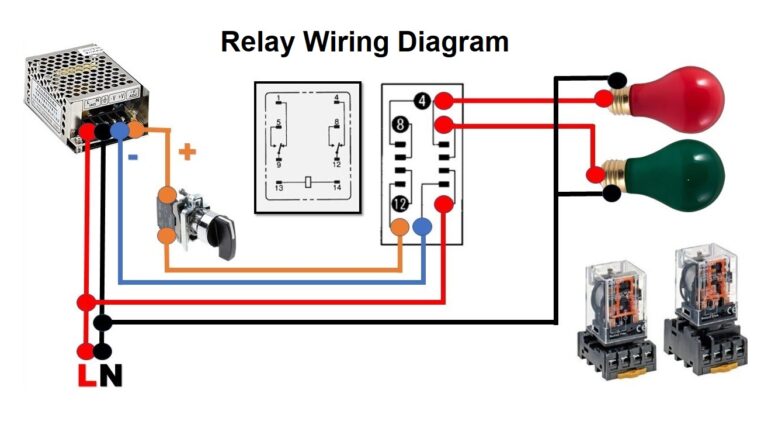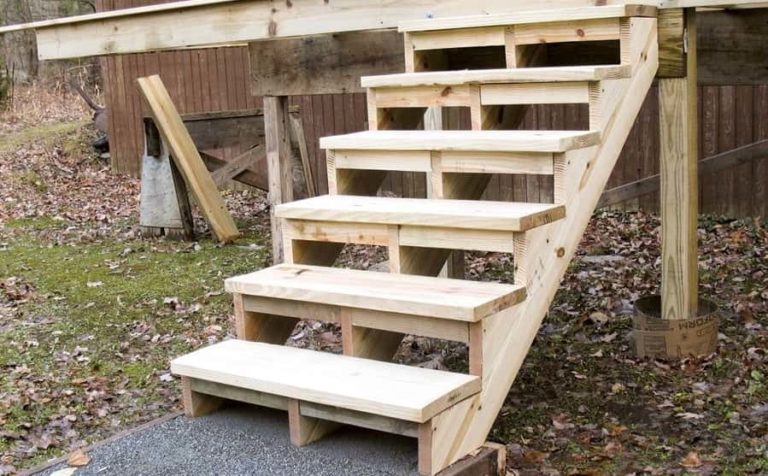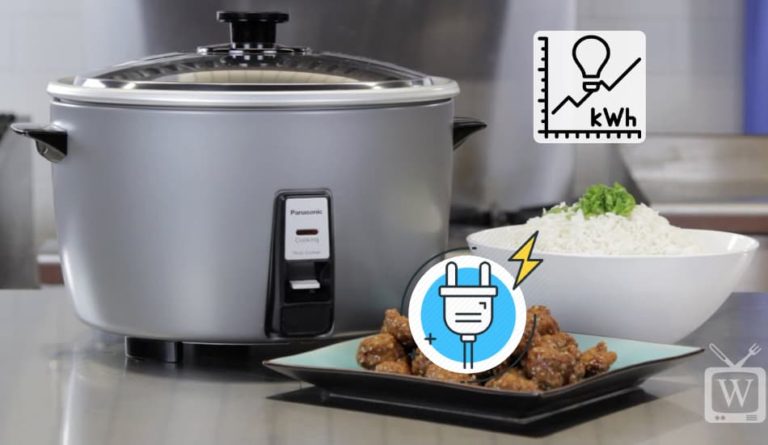How Much Power (Watts) Does A Range (Kitchen) Hood Use?
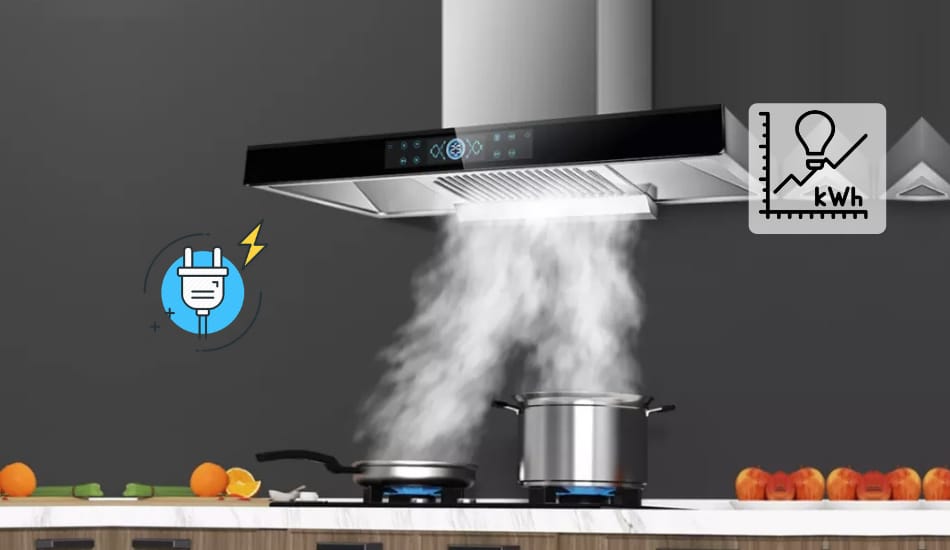
A range hood, kitchen hood, or exhaust hood is a household device that contains mostly a mechanical fan that is placed to hang above the stove in the kitchen. People don’t realize that range hood can also be a large consumer of electricity. But how to find out how much power it actually consumes? The good thing is that there is an energy label on some models with a color scale that tells you whether it is an energy-efficient device or not. But there’s an even better way, so let’s see.
Table of Contents
How Much Power (Watts) Does A Range Hood Use?
So How Much Power Does A Range Hood Use? A typical range hood consumes between 65 watts to 300 watts of power depending on its extraction rate and it is used approximately 4 hours a day. If we use the average price of electricity of 13 cents per kWh, we’ll get that each day we spend 0.26 to 1.2 kWh which is between $0.03 to $0.15 per day.
Keep in mind that range hoods can also operate at different CFM speeds, and that also affects power consumption. A range (kitchen) hood is one of the essential devices to keep our kitchen smoke-free and odor-free. It works by sucking the air from the kitchen and then send it outside.
The real power consumption of the range hood can be very easily calculated. The average price of electricity in the US is 0.13 cents per kWh. Most range hood models have a power consumption that ranges from 65 watts to 300 watts which depends on their extraction rate. In the table below we can see different models and their consumption.
| Range Hood Model: | Power Consumption [W] | Hours Per Day | Cost Per Month |
|---|---|---|---|
| Chef PS18 | 65 Watts | 4 hours | $1.01 |
| FOTILE JQG7501 30-Inch | 110 Watts | 4 hours | $1.71 |
| Z Line KB Wall Mount | 160 Watts | 4 hours | $2.49 |
| Zuhne iChorus 36-Inch | 210 Watts | 4 hours | $3.27 |
| Broan F40000 Series | 300 Watts | 4 hours | $4.68 |
You can also use the energy calculator for the range (kitchen) hood so you’ll know how much power does your range hood consumes. Be sure to check what is your current electricity price per kWh in your region, by checking the Global Electricity rates. Just enter the necessary cost per unit (kWh) and you will find the exact price.
If you want to learn How Much Power (kWh) Does a Blender Use, read this article.
Calculating Power Consumption Of Range Hood
The total power consumption of a range hood depends mainly on its power and duration. Electricity consumption is calculated according to the formula kW x h, where kW is the electricity consumption of the device per hour, and h is the operating time of the device. To calculate the power consumption, you first need to know the power of your range hood. This indicator is mostly visible on a special sticker (label) on the body of the device.
Let’s assume that your range hood is 300 W (this means that in the operating mode it consumes 0.3 kW/h). The range hood does not work all day in circulation (recirculation) mode, on average it works for about 4 hours, which means that the flow rate will be: 4 (operating time) x 0.3 (flow rate per hour) = 1.2 kW/per day.
Electricity consumption per month: 30 (working days) x 1.2 (consumption per day) = 36 kW/month.
The price that will cost you to run your range hood for a month: 36 [kWh] x 0.13 cents (the electrical price for 1 kWh in US is around 0.13 cents) = $4,68.
You can also use these Energy Range Hood Calculator to get results.
Attention! We have calculated the power consumption of a 300 Watt range hood for 4 hours of work per day, if you use a hood of different power (higher or lower), the flow rate changes in the same way!
Save Energy By Choosing The Right Range Hood
In order to save money and lower the electrical costs of a range hood, it is important to choose the right model for your home. If you choose a range hood that is much larger than you need, you will waste energy and money. Below we will explain how to choose the right model.
To calculate what performance the range hood should be for a particular room, we use the formula :
P = S * H * 12 * 1.3
- P – exhaust capacity (cubic m / h)
- S – room area (sq. M), H – height (m)
- 12 – average standard air exchange rate for 1 hour
- 1.3 – power factor (allows you to take into account losses associated with the number of floors in the building, the length of the ventilation shaft, bends of the ventilation duct, possible blockages)
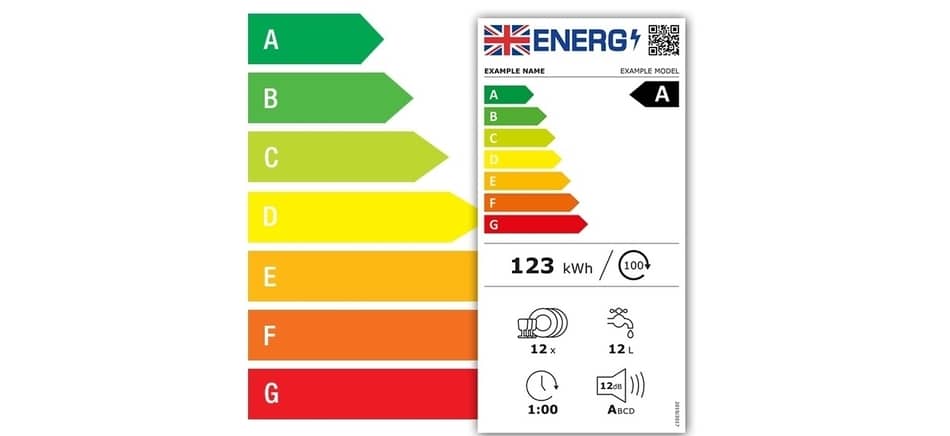
Now let’s calculate the range hood, using an example, the performance of a hood for a kitchen with an area of 9 sq. m and with a ceiling height of 8.2 feet (2.5 m):
P = 9 * 2.5 * 12 * 1.3 = 351
Thus, for this room, the exhaust capacity must be at least 351 cubic meters. This indicator is mostly located in the equipment data sheet or on a sticker (label) on the case. Strict adherence to requirements and standards ensures maximum efficiency of equipment, long service life, and operational safety.
Range Hood Size Affects Device Power
Mostly larger hoods with wide filter panels draw in more air, that is, they have a high throughput (productivity). The larger the hood, the higher its power, and hence the productivity.
However, progress does not stand still, and in relation to modern technology, it is not entirely correct to apply this approach. Range hoods for the kitchen are varied in size, shape, motor power, and number. An example of this is T-shaped and inclined units, which, in the absence of a volumetric dome, cope well with air intake even in spacious rooms.
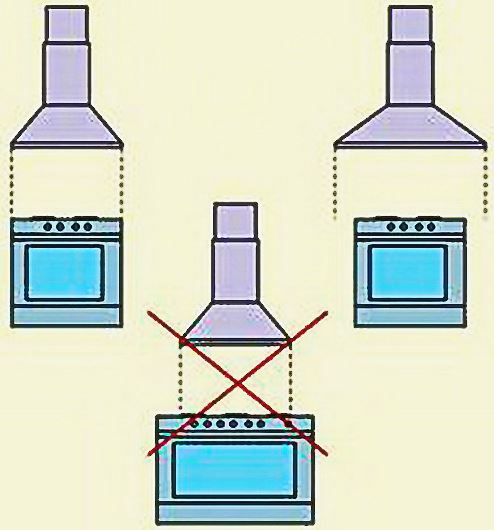
Therefore, choosing the right model can save you energy consumption. The comparison shows that a large-sized range hood loses in power and performance to a smaller inclined hood. Therefore, when choosing, you should pay attention not to the size of the device, but to its technical characteristics.
How Range Hood Actually Works?
How a range (kitchen) hood works can be very simply explained. It uses a fan that sucks air from the kitchen and then it pushes that air out through the duct. In some cases, there will be an external fan that is located in the duct to give even more efficiency to push the air out. A typical range hood consumes 0.110 kWh of energy per hour. If we calculate that, we’ll get that an hour of usage can cost us 0.012 cents.
The power consumption of the hood depends on 2 components:
- The power of the device.
- Mode (time) of work.
You can choose between two operating modes for your range hood:
- recirculation
- exhaust air
While the exhaust air technology blows the extracted air directly into the open air and thus quickly eliminates kitchen smell, it has a disadvantage compared to the recirculation technology that draws warm air outside. During the winter this means more heating, which equals more costs.
A combi hood uses exhaust air in the warm months and switches to circulating air in winter. This saves you heating costs.
Regular Cleaning Saves Money
To avoid poking around in the mist while cooking, you should clean the filter on your range hood regularly. Fat particles clog the filter fabric and make it difficult to clear the air. However, cleaning has another positive effect: if the filter is permeable, the range hood needs less energy.
Energy-Saving Tips
- Try to use the range (kitchen) hood only when it is necessary.
- Consult with an expert to install the right range hood for your kitchen. If you are using a greater and larger model than it is needed for a smaller kitchen, then you are wasting energy.
Conclusion
The range (kitchen) hood is necessary equipment in the kitchen that draws out all unpleasant odors and combustion products from the room during cooking. The power consumption of such devices varies between 65 Watts to 300 Watts.
Before buying, you should calculate the required performance for a particular room, familiarize yourself with the technical characteristics of the model, decide on the material, control mechanism, and type of filtration. Do not forget about the norms and requirements for equipment and its installation. This will extend its service life and improve the quality of work.


